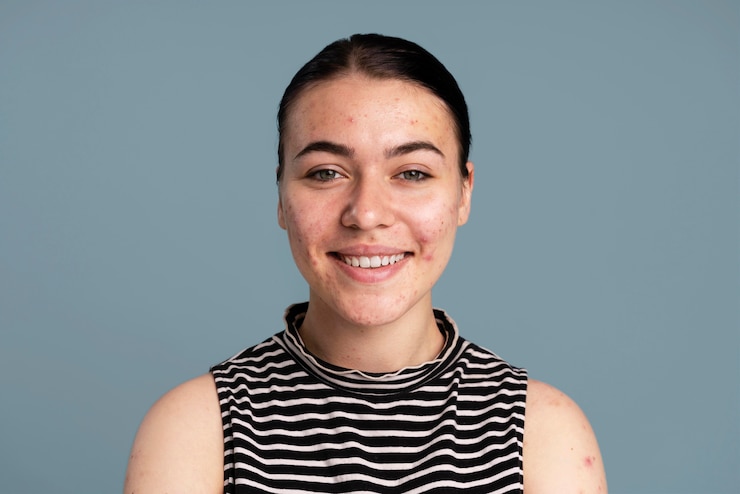
Acne is a common skin condition that often begins during puberty, but it doesn’t only affect teenagers—it can show up in adults too. In fact, adult acne is the most widespread skin issue globally, and its occurrence has grown significantly over the last couple of decades, especially among women. About 85% of females and 15% of males experience adult acne. It can range from mild, with blackheads, whiteheads, or small pustules, to more moderate cases featuring papules across large portions of the face or body. Severe adult acne may include intense redness, swelling, and irritation. Another condition, rosacea, is sometimes mistaken for acne—but it’s a different issue, as its bumps are smaller and tend to appear in cycles.
What Causes Adult Acne?
1. Hormonal Changes
Hormones play a big role in adult acne. Fluctuations in hormone levels can disrupt the body’s balance, affecting the skin’s environment by altering pH levels, causing inflammation, changing circulation, or leading to excess oil (sebum) production. These changes often occur during life stages like pregnancy, menstruation, breastfeeding, or menopause. Hormonal acne often appears as deep, painful cyst-like bumps.
2. Contact Irritation
Skin can react to anything that irritates it, such as harsh cleansers, razors, or even certain fabrics. This irritation weakens the skin’s defenses, which may lead to inflammation and acne.
3. Emotional Stress
Anxiety or stress causes biological changes in the body, including the release of cortisol, the stress hormone. Higher cortisol levels can throw the body off balance and increase the chances of breakouts.
4. Physical Stress
Physical changes like lack of sleep, dehydration, illness, or exposure to extreme weather can also trigger acne. Environmental factors, such as air pollution, allergens, and smoking, have also been linked to an increase in adult acne cases.
5. Clogged Pores
When oil builds up in the skin or rapid turnover of skin cells blocks hair follicles, pores can become clogged, leading to acne.
6. Bacteria
Acne-causing bacteria, known as *Propionibacterium acnes*, can build up beneath the skin and trigger breakouts. This buildup is not related to poor hygiene, and surface cleaning often can’t reach the bacteria.
7. Diet
Some people believe their acne worsens after consuming certain foods, like sugary treats, dairy products, white flour-based foods, or fast food.
8. Medications
Certain medicines, such as some antidepressants, corticosteroids, and epilepsy treatments, may lead to adult acne. While some birth control pills help treat acne, certain formulations might cause it. It’s advisable to consult a doctor for the best treatment option that suits individual needs.
Conclusion
Everyone’s skin responds differently, so the effectiveness of acne treatments can vary. Some people find over-the-counter (OTC) remedies work well, while others may need help from a healthcare provider to determine whether prescription treatments are a better option. Trying a combination of solutions may help identify the treatment plan that works best for you.